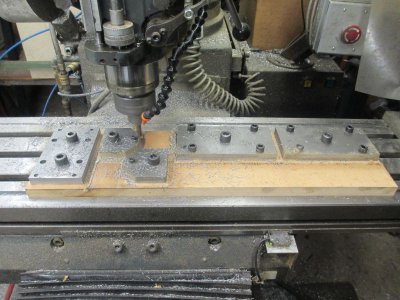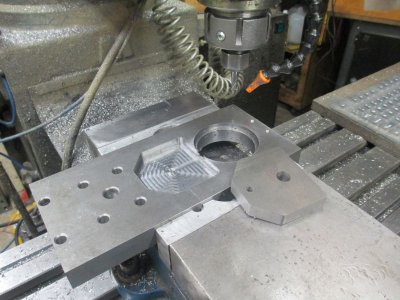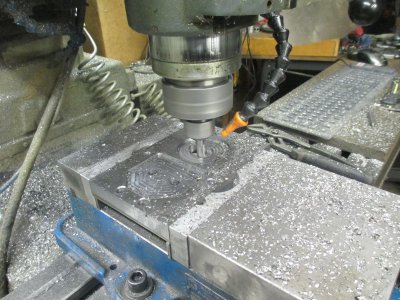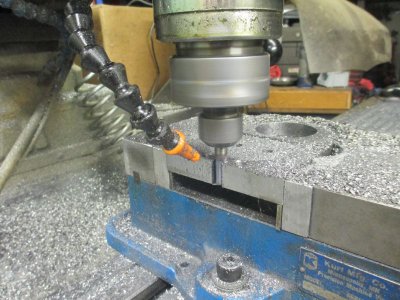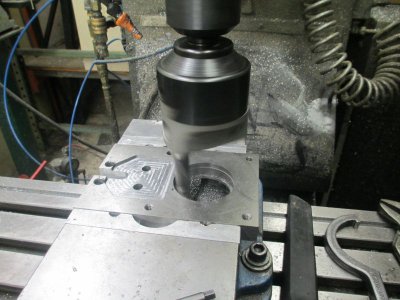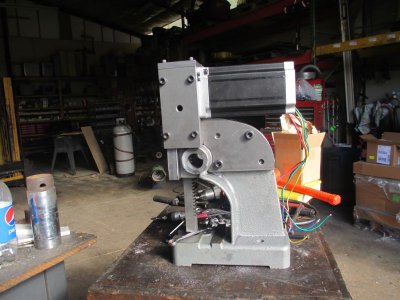A bit more work on the press project today
This is the front support plate. It will have a bore for a ball bearing and some clearance milled for the cam follower carrier. Again this is mounted up on a chunk of MDF and through bolted to the T-slots.
I could cut the parts with the bandsaw, square them up, locate the edges precisely, then drill the hole pattern, or just do all of those operations in one setup. This could be done the same way on a manual machine as a CNC. For the bearing bore and the other machining I will put them in the vice.
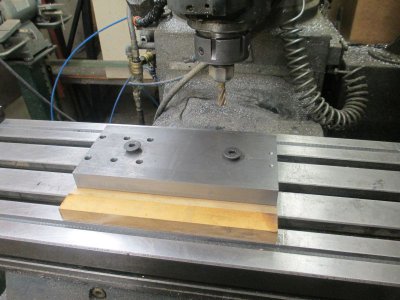
The next batch of parts is made of 0.500, C1018 steel. There are 5 pieces: 2 side plates, 1 top plate and a pair of cam follower carriers. Again I could have done all of separately, but there are less steps and fewer tool changes when doing them all at once in one setup. There will be a secondary operation on the cam follower carriers to bore the pin hole, but that will be done once they are welded to the ram. I was able to put in ‘’lubrication access holes’’, which just happened to exactly fit the T-slot spacing.:whistle:
I set up the material as I described in a previous post. The one addition that I did here is to put a small mark with a center drill at a known location for a datum point. We had pretty good winds today and I was afraid that we might lose power. This is the down side of using this method to place the material in that I have no idea exactly where the edges are at with out actually measuring. Thus the witness mark in case I lose the 0. I could locate this mark with either the pointy end of an edge finder or a spindle microscope.
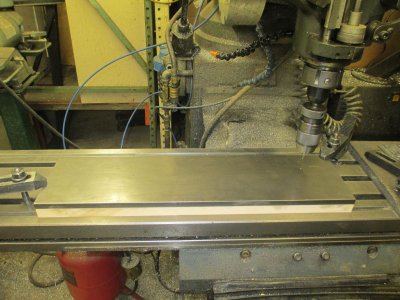
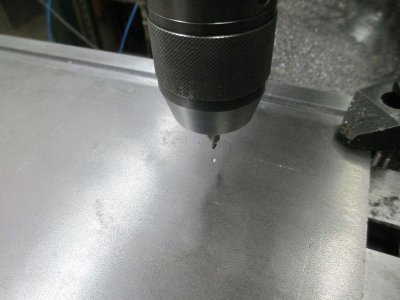
First center drill and pilot drill, and final drill the hold down cap screw locations, then install the hold down bolts.
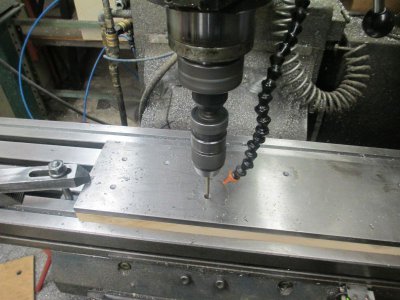
Then center drill and pilot drill, and final drill the rest of the holes. The 3/8 and ¼ inch cap screws are threaded into the MDF. Because there is only one hold down cap screw per part I did this to prevent the part from possibly twisting. The 3/8 and ¼ holes are used in the final assembly so they serve a dual purpose. It is now set up and ready to start cutting out parts.
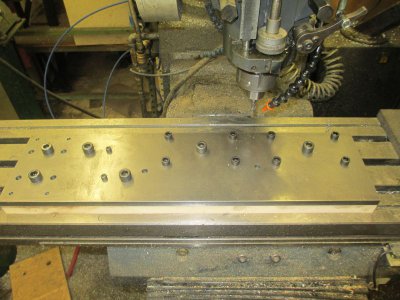
First I cut out the big chunks to minimize waste and to get them out of the way. Then made the roughing pass leaving 0.020 for final clean up. Then a clean up pass to finish. After deburing and countersinking the holes, the plates are complete.
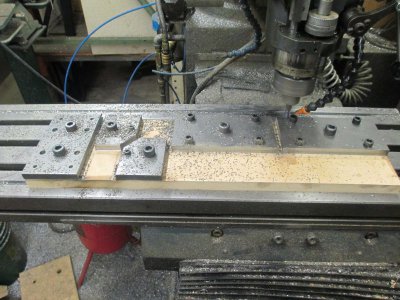
Now all of the parts are cut out and drilled. Tomorrow I’ll do the secondary operations on the parts that need it.
